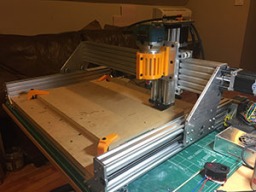Salmon Sphinx 1.0
Discussion in 'CNC Mills/Routers' started by Brian Popp, Apr 27, 2017.
Salmon Sphinx 1.0
Discussion in 'CNC Mills/Routers' started by Brian Popp, Apr 27, 2017.
A tribute build based on Kyo's wonderful CBeam Sphinx. My hope is to improve on that build slightly, but to be honest, I'll probably just screw it up. I'll use this build to publicly document my failures.
Page 1 of 2
Page 1 of 2
